Astrology
Examining the Historical Relationship Between Christianity and Astrology

In the past, Christianity and astrology have experienced a complex and sometimes controversial relationship. On the one side, astrology has been considered a form or idolatry and paganism by a number of Christian authorities. However there have been numerous instances of Christians employing astrology to strengthen their faith and to interpret divine will.
In this post we’ll look into the fascinating history of Christianity and the astrological world, and examine the changes in their interaction throughout the course of. From the early church fathers through the advent of modern astrology, we will explore the complex and sometimes contradictory ways both belief systems have interacted and what this reveals about the larger religious and cultural environment of the past and today. Join us for this journey through the ages, and explore the myriad ways that Christianity and Astrology as well as astrology interacted and diverged throughout time.
Relationship Between Astrology and Religion
The long-standing relationship between astrology and religious belief is a topic that has been a subject of debate between scholars and members of the public. Astrology, which seeks to comprehend the universe as well as the human race and nature guided by forces that are beyond, is usually regarded as a religious concept. But, there are those who claim that it is part of the sciences of nature, specifically the field of astronomy. In spite of disagreements, astrology continues to be a fascinating subject for discussion and research in both esoteric and religious contexts. This article seeks to examine astrology’s roots through the ages and illuminate the current revival.
Historical Use of Astrology in Christianity
The history of Christianity and Astrology has been a complicated and diverse relationship. The earliest Christian figures like St. Augustine and St. Thomas Aquinas opposed the practice of astrology, judging it as in conflict with Christian beliefs. Some medieval theologians tried to reconcile Christianity and Astrology by stating that God was the ruler of the soul, and the stars controlled the sublunary body, which was inherently flawed. Astrology was also mentioned in Christian writings, like Dante’s use of the astrological planets when he wrote his prophecies. However, some figures like Martin Luther denounced astrology as fake and were framed by the devil in order to keep people away from the divine call.
Different Perspectives Regarding Astrology in Christianity during the Early Modern Period
In the early modern age, there was a variety of opinions about Christianity and Astrology. While some theologians believed in astrology that was scientifically explaining the movements of celestial bodies, others criticized its predictive nature and potential to restrict human free will. The Catholic Church has been against the practice of astrology because it could cause conflict and conflicts with Christian theology. However, a number of Jesuit authors were engaged in the research and practice of astrology, which demonstrates the more nuanced approach to the study of astrology in Jesuit research. This relationship between Christianity and astrology reveals the conflict and the complexity of religion and science.
Christianity’s Criticism of Astrology: St. Augustine and Martin Luther
Through the centuries, Christianity and astrology have been in a tense relationship and many notable figures in Christian history have opposed the practice of astrology. Saint. Augustine believed that astrology did not conform to Christian doctrines, and he substantiated his opposition to the inability of astrology in explaining twins that behave differently regardless of being born simultaneously.
Martin Luther similarly rejected astrology and claimed that it was a creation of Satan to keep people from pursuing certain professions. Luther claimed that misfortunes are the work of God and were not predicted by the stars and he also compared astrologers with people who forecast that the odds of a dice roll will fall at a specific point.
Astrology and Christianity in Medieval Times: Thomas Aquinas and Nicholas Oresme
In medieval times, the connection between the astrological system and Christianity and Astrology was complex. Thomas Aquinas, a theologian thought that astrology is in contradiction with Christian doctrine because it failed to explain how twins behaved differently despite being born simultaneously. He was opposed to the predictive aspect of astrology and argued for the free will principle.
However, Nicholas Oresme, a mathematician who included astronomy an aspect of the field of astrology. He saw the prediction of future events as an appropriate area of study however he opposed the idea of using the astrological system to predict human actions that is based on free will. Both scholars recognized the power of the stars but viewed the issue in different ways.
Reconciling Christianity and Astrology: Albertus Magnus and John Dee
Albertus Magnus and John Dee both have played roles in the relationship between Christianity and Astrology. Magnus was a scholar from the 13th century was well-known for his research into natural substances and for his work in the fields of mathematics, astrology and alchemy. Magnus believed in the need to distinguish between belief in superstitions and legitimate scientific curiosity.
Dee On the contrary was a 16th-century philosopher who was an English Neoplatonist and was renowned for his fascination with the fields of astrology, magic, and optics. Both individuals were avid in natural philosophy and their work has been instrumental in understanding the relation between Christianity and Astrology.
Astrological Symbols in Christian Art and Architecture
The symbolic representations of the stars have had a major part in Christian architecture and art throughout the history of. The use of the zodiac significations, planets, and constellations can be observed in the decorations of cathedrals, churches, and manuscripts. The use symbolism in Christian artwork demonstrates faith in the power of celestial bodies on our lives and echoes the medieval notions of astrology.
For instance, zodiac signs can be seen inside stained glass windows of cathedrals, like Notre Dame in Paris. In addition, the representation of Magi in Christian art is considered to be a connection between the astrological world as well as Christianity and Astrology and their quest to discover the place of birth of Jesus was aided by the star. Although the connection between the study of Christianity and Astrology has changed through time, the use of the astrological symbolism in Christian architecture and art serves as an evidence of their past relationship.
Astrological Systems Used in Christianity: Astrological Houses and Planets
The astrological system has been utilized to study the relation between celestial bodies and human activities. One of these systems is the astrological house, created during the thirteenth century, by the mathematician Guido Bonatti. The houses are a way of dividing the sky into equal 30 degree circles and help identify the locations and relationships of the planets during the time of birth.
In addition, the planets themselves are important in Christian Astrology. Every planet was believed to have an impact on various aspects of one’s life. For example, Mars was associated with conflict, and war, while Venus was connected with love and beauty. Through studying the positions and the relationships between stars, Christians were of the belief that they would get insight into the personal and spiritual aspects.
Role of Astrology in Christian Festivals and Ceremonies
Astrology has played a major part in a variety of Christian celebrations and events throughout the ages. For instance, in the Bible, Magi were called Astrologers who travelled to an astrological path that led to the Star of Bethlehem to visit the infant Jesus. This celebration is held every year during Epiphany, the Christian festival of Epiphany.
Also, the zodiac played an important part in Christian art in its Renaissance period, when astrological symbols were utilized to symbolize the apostles. Furthermore, saint John the Baptist’s feast day falls on solstice in the summer that was considered as a significant date on the calendar of the astrological. Although there is some opposition to astrology in those in the Christian society, it’s impact on Christian customs and practices remains apparent.
Contemporary Debate on the Relationship Between Christianity and Astrology
The connection between Christianity and Astrology and the study of astrology is a subject of discussion among scholars and practitioners. Certain Christians believe that astrology is not compatible with their faith and cite Bible passages that ban divination and seek advice from any other source than God. Some argue that astrology could be a useful tool to spiritual awareness and self-awareness.
They point to Biblical texts that refer to astrological signs as well as the wise men who followed the stars to discover Jesus. Modern Christians who believe in astrology typically employ it as a supplement to their faith, but not an alternative to it. The relationship to Christianity, as well as astrology, can be complicated and diverse, and the opinions about it are diverse.
Astrology
Archetypal Lovers: Exploring the Timeless Romantic Pairings

Introduction
Love has been a timeless and universal theme in human culture, and throughout history, various archetypal lovers have captured our imaginations. These iconic romantic pairings have been depicted in literature, art, and mythology, resonating with people across generations. In this article, we will delve into the concept of archetypal lovers, exploring their significance, characteristics, and enduring appeal.
1. The Definition of Archetypal Lovers
Archetypal lovers are recurring themes or patterns in romantic relationships that embody deep and fundamental human desires and emotions. These patterns are embedded in our collective unconscious and are reflected in the stories we tell about love.

2. The Origin of Archetypes in Love
Archetypes of love can be traced back to ancient myths and folklore, where certain romantic pairings emerged as powerful symbols of human yearnings and experiences.
3. The Hero and the Damsel in Distress
One of the classic archetypal lovers is the hero and the damsel in distress. The hero, often depicted as brave and noble, rescues the damsel in distress, who is in a vulnerable or perilous situation. This archetype signifies the human desire for protection and the triumph of good over evil.
4. The Star-Crossed Lovers
The star-crossed lovers, as popularized by William Shakespeare’s “Romeo and Juliet,” represent love that is thwarted by external circumstances, such as feuding families. This archetype embodies the intensity of young love and the tragic consequences of societal barriers.
5. The Forbidden Love
Forbidden Love explores the allure of relationships that defy societal norms or face opposition from others. This archetype delves into the complexities of human emotions and the courage to pursue love despite adversity.
6. The Opposites Attract
The opposites-attract archetype portrays the magnetic pull between individuals with contrasting personalities, backgrounds, or beliefs. This pairing highlights the idea that differences can complement each other and lead to personal growth.
7. The Eternal Soulmates
Eternal soulmates are two individuals destined to be together throughout multiple lifetimes. This archetype symbolizes the profound connection and spiritual bond that transcends time and space.
8. The Transformational Love
Transformational love involves personal growth and change through the influence of a romantic partner. This archetype emphasizes the power of love to inspire positive transformations in individuals.
9. The Sacrificial Love
Sacrificial love explores the willingness to make significant sacrifices for the well-being and happiness of a loved one. This archetype demonstrates the depth of devotion and selflessness in romantic relationships.
10. The Unrequited Love
Unrequited love represents the pain and longing of loving someone who does not return the same feelings. This archetype delves into themes of rejection, heartbreak, and unfulfilled desires.
11. The Love Triangle
The love triangle involves three individuals entangled in a complex web of emotions, creating tension and drama in the narrative. This archetype delves into themes of jealousy, rivalry, and difficult choices.
12. The Mature Love
Mature love is characterized by a deep emotional connection, understanding, and mutual respect between partners. This archetype explores the evolution of love as it matures over time.
13. The Love Beyond Time and Space
Love beyond time and space transcends physical limitations and explores the idea of connections that exist beyond the earthly realm. This archetype delves into themes of destiny and cosmic love.
14. The Archetypal Lovers in Contemporary Media
In modern storytelling, archetypal lovers continue to captivate audiences in various forms, from books and films to TV shows and social media. These timeless themes persist because they tap into our deepest desires and emotions.
15. Conclusion
Archetypal lovers hold a special place in human hearts, as they represent the universal yearnings and experiences surrounding love. From the hero and the damsel in distress to the love beyond time and space, these romantic pairings have left an indelible mark on our cultural consciousness.
Astrology
The Lover Archetype: Understanding the Depths of Passion and Connection

Introduction
Love is a complex and multifaceted emotion that has captivated humanity since time immemorial. In the realm of psychology and mythology, the concept of archetypes helps us understand the patterns and traits that define human behavior. One such archetype is “The Lover,” which embodies the essence of passion, connection, and desire. In this article, we will delve deep into the lover archetype, exploring its definition, significance, and how it manifests in various aspects of life.
Defining Lover Archetype
What is an Archetype?
Archetypes, as proposed by Swiss psychiatrist Carl Jung, are universal symbols and themes that exist in the collective unconscious of all human beings. They shape our thoughts, feelings, and actions, influencing how we perceive the world around us and interact with others. Archetypes are the blueprints of human behavior and hold great symbolic meaning.
Exploring the Lover Archetype
Lover Archetype represents an intense and passionate aspect of human nature. It is associated with the pursuit of love, beauty, and sensuality. Individuals embodying Lover Archetype are driven by deep emotions and yearn for profound connections with others and the world.
Common Traits of the Lover Archetype
People influenced by the Lover Archetype often exhibit traits such as empathy, sensitivity, and a heightened appreciation for aesthetics. They are romantic at heart, valuing emotional intimacy and cherishing the bonds they form with loved ones.

The Lover Archetype in Mythology and Literature
Examples of the Lover Archetype in Myths
Throughout mythological tales from various cultures, we encounter characters embodying Lover Archetype. From Greek mythology’s Eros, the god of love, to the alluring sirens luring sailors in the Odyssey, Lover Archetype takes many captivating forms.
Beloved Characters in Literature Exhibiting the Lover Archetype
In literature, Lover Archetype is evident in characters like Shakespeare’s Romeo and Juliet, who exemplify the intensity of love and its tragic consequences. Countless other novels and poems feature protagonists driven by the allure of passion and connection.
Lover Archetype in Psychology
Carl Jung’s Collective Unconscious and Archetypes
Carl Jung’s groundbreaking theory of the collective unconscious highlights the presence of archetypes in the human psyche. Lover Archetype is a vital component of this shared unconscious, shaping our relationships and emotional experiences.
Love and Attachment Styles
Psychologists study the impact of archetypes on love and attachment styles. Those influenced by the Lover Archetype may exhibit styles characterized by warmth, closeness, and emotional expression.
Impact of the Lover Archetype on Relationships
Understanding the Lover Archetype can shed light on the dynamics of romantic relationships. The desire for intimacy and connection can lead to fulfilling partnerships or, if unbalanced, create challenges.
Embracing Lover Archetype in Daily Life
Cultivating Self-Love and Self-Compassion
The journey of the Lover Archetype begins with self-love. Practicing self-compassion and acceptance allows individuals to form healthier connections with others.
Nurturing Romantic Relationships
For those influenced by the Lover Archetype, nurturing romantic relationships is essential. They can enhance intimacy by expressing their emotions and needs openly.
Embracing Passion in Hobbies and Interests
Lover Archetype often fosters a deep appreciation for beauty and creativity. Embracing passions in hobbies and interests can bring joy and fulfillment to life.
The Shadow Side of the Lover Archetype
Obsession and Possessiveness
Unbalanced expressions of Lover Archetype can lead to obsession and possessiveness, causing strain in relationships.
Fear of Abandonment
Individuals strongly influenced by the Lover Archetype may fear abandonment, influencing their behavior and decision-making.
Balancing Love and Independence
Finding a balance between the desire for love and maintaining individuality is crucial for personal growth and healthy relationships.
The Lover Archetype in Pop Culture
Iconic Movie Characters Representing the Lover Archetype
In popular culture, numerous movie characters embody the Lover Archetype, showcasing the beauty and complexity of love.
Musicians and Artists Embodying the Lover Archetype
Musicians and artists often draw inspiration from Lover Archetype, channeling their emotions into their creative works.
Finding Your Dominant Archetype
Reflecting on Your Traits and Desires
Understanding your dominant archetype, including the Lover, involves introspection and reflection on your emotions and desires.
Seeking Guidance from a Professional
A professional therapist or counselor can provide valuable insights into your archetypal inclinations and help navigate your emotional landscape.
Conclusion
Lover Archetype represents the profound human desire for connection, love, and beauty. As a symbol deeply ingrained in the collective unconscious, it influences our relationships, passions, and creative expressions. By embracing Lover Archetype with self-awareness and balance, individuals can forge meaningful connections, find joy in life’s aesthetics, and experience the transformative power of love.
Astrology
Nine of Pentacles Love: Embracing Independence and Deepening Connections
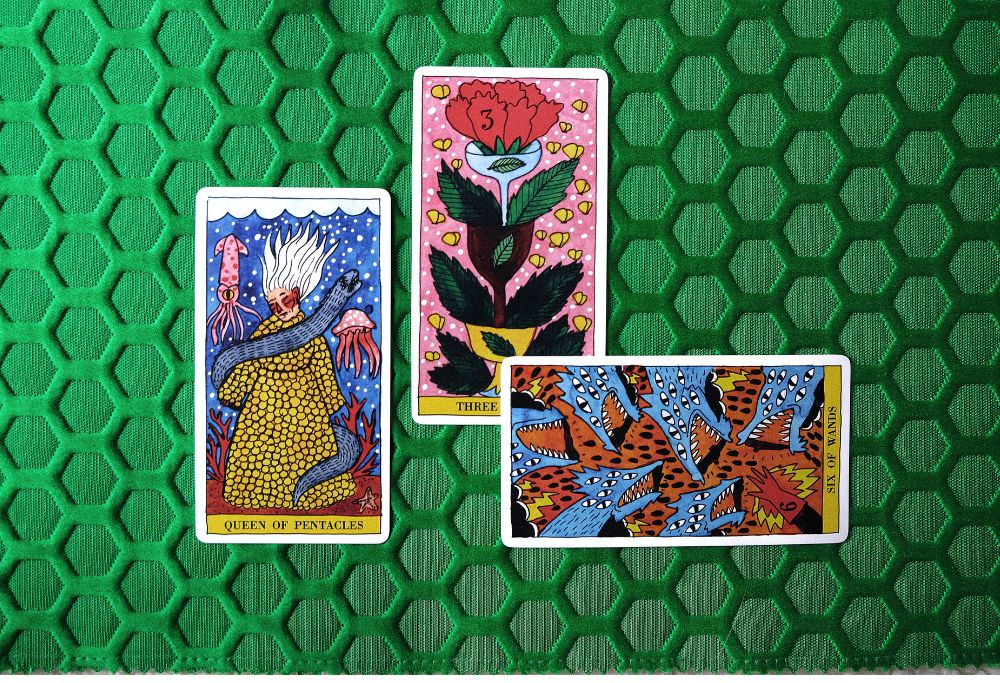
Introduction
Welcome to the world of tarot and love, where the cards can offer valuable insights into relationships and self-discovery. In this article, we will explore the significance of the Nine of Pentacles in love and how it can guide us in fostering meaningful connections and personal growth. Whether you’re single, in a relationship, or healing from past heartbreaks, the wisdom of the Nine of Pentacles in love can provide guidance and clarity on your romantic journey.
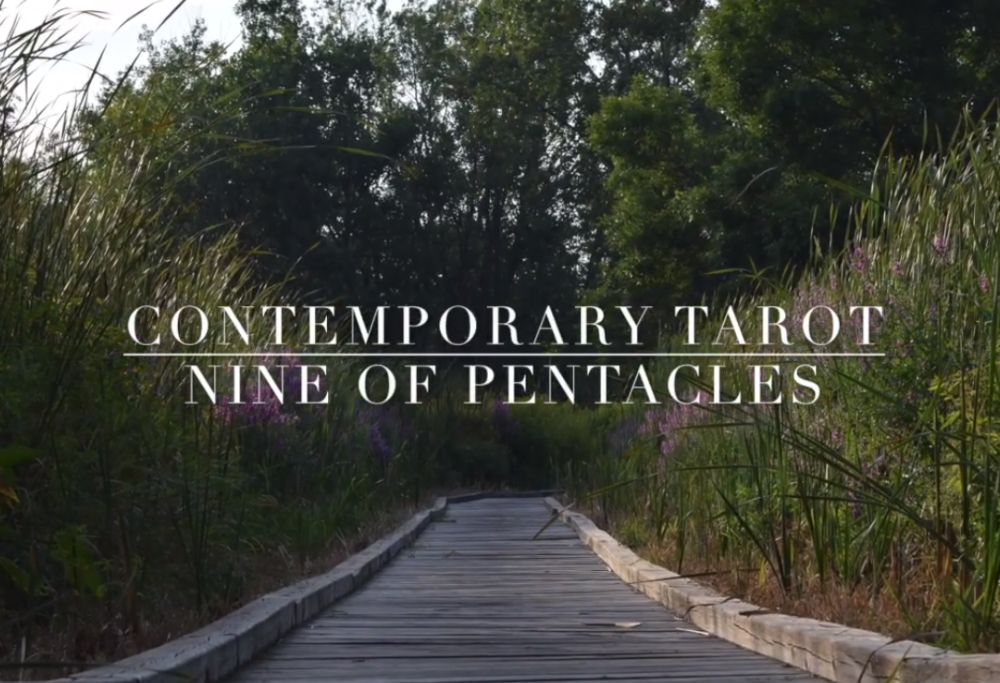
Understanding the Nine of Pentacles in Love
What are the Nine of Pentacles?
The Nine of Pentacles is one of the 78 cards in a traditional tarot deck, representing abundance, luxury, and self-sufficiency. It portrays a person surrounded by nature, symbolizing their independence and connection to the material world.
The Symbolism Behind the Card
Each element in the Nine of Pentacles in Love holds symbolic meaning, from the lush garden to the elegant clothing. Understanding these symbols can enhance our interpretation of the card’s significance in love and relationships.
The Tarot and Love
Before delving into the specifics of the Nine of Pentacles in Love, let’s explore how tarot cards, in general, can offer valuable insights and guidance in matters of the heart.
The Nine of Pentacles in Love
Explore the profound lessons the Nine of Pentacles in love offers to enrich your love life and personal journey.
Embracing Independence
Learn to celebrate your independence and embrace your own company before seeking a romantic partner.
Appreciating Your Own Worth
Understand your true value and worth, fostering healthier relationships with a solid foundation of self-love.
Finding Self-Sufficiency in Love
Discover the beauty of interdependence and how two self-sufficient individuals can create a strong bond.
Building Strong Foundations
Learn how the Nine of Pentacles in love encourages you to build a solid foundation for a lasting and meaningful relationship.
Taking Time for Yourself
Explore the importance of self-care and finding time for personal growth, even within a committed relationship.
Nurturing Relationships
Discover how the Nine of Pentacles in love emphasizes the significance of nurturing love and building emotional intimacy.
Signs and Aspects
Examine the Nine of Pentacles in love connections to various signs, elements, and astrological aspects.
Nine of Pentacles and Compatibility
Discover the compatibility of this card with different zodiac signs and its implications on relationships.
Reversed Card Interpretation
Understand the reversed position of the Nine of Pentacles and its potential impact on love and romance.
Upright Card Interpretation
Explore the upright position of the Nine of Pentacles and its positive influence on relationships.
Astrological Associations
Uncover the astrological signs associated with the Nine of Pentacles and how they can shape romantic dynamics.
Numerology and the Nine of Pentacles
Learn about the numerological significance of the number nine and its impact on this tarot card’s meaning in love.
Elemental Connection
Discover the Earth element’s influence on the Nine of Pentacles and its representation of grounded love.
Healing from Past Relationships
Find guidance on healing and growing from past relationship experiences to open your heart to new love.
Letting Go of Baggage
Explore the importance of releasing emotional baggage to welcome fresh and meaningful connections.
Learning from Past Mistakes
Understand how past relationship experiences can serve as valuable lessons for future romantic endeavors.
Fostering Emotional Growth
Discover how healing from past hurts can lead to emotional growth and healthier relationship patterns.
Opening Up to New Love
Learn to be open to new romantic opportunities without being hindered by past disappointments.
Reconnecting with Yourself
Explore the journey of reconnecting with your true self after experiencing heartbreak.
Navigating Long-Distance Relationships
Gain insights and valuable tips for sustaining a loving connection when distance separates partners.
Communication in Absence
Discover effective communication strategies to maintain intimacy and connection in a long-distance relationship.
Trust and Security
Explore ways to build and maintain trust and security despite physical distance.
Planning Visits and Shared Goals
Learn how to plan visits and set shared goals to keep the relationship strong.
Managing Jealousy and Insecurities
Address jealousy and insecurities that may arise in long-distance relationships and find healthy ways to cope.
Sustaining Emotional Intimacy
Discover how to sustain emotional intimacy and closeness despite the physical distance.
Making It Work: Tips and Advice
Practical tips and advice for making a long-distance relationship thrive.
Cultivating Self-Love and Confidence
Explore the importance of self-love and confidence in attracting and maintaining fulfilling relationships.
The Power of Self-Affirmations
Discover the transformative impact of positive self-affirmations on self-love and self-esteem.
Prioritizing Self-Care
Learn the significance of self-care in fostering a healthy and confident mindset.
Seeking Personal Growth
Explore the journey of personal growth and self-improvement in the context of love.
Overcoming Insecurities
Address common insecurities and learn strategies to overcome them in relationships.
Embracing Your Authentic Self
Understand the value of embracing your authentic self and letting go of pretenses in love.
The Nine of Pentacles and Marriage
Explore the dynamics of the Nine of Pentacles in the context of marriage and long-term commitment.
Creating a Strong Partnership
Learn how to build a strong partnership based on mutual respect and admiration.
Balancing Independence and Togetherness
Discover the art of balancing individual independence with togetherness in a marriage.
Financial Considerations
Address financial considerations and planning for a secure future together.
Preparing for Commitment
Explore the process of preparing for commitment and discussing future plans with your partner.
Supporting Each Other’s Goals
Learn how to support and encourage each other’s personal and professional goals.
Coping with Heartbreak and Loss
Find solace and guidance in coping with heartbreak and navigating the healing process.
Embracing Grief and Healing
Explore the healing process and the importance of embracing grief after a breakup or loss.
Seeking Support from Loved Ones
Discover the power of seeking support from friends and family during challenging times.
Focusing on Personal Growth
Understand the transformative potential of focusing on personal growth after heartbreak.
Allowing Yourself to Love Again
Learn to open your heart to love again and take a chance on new relationships.
Finding Love as a Single Parent
Explore the unique journey of finding love as a single parent and nurturing both parental and romantic roles.
Honoring Your Parenting Role
Discover the importance of honoring your role as a parent while seeking romantic connections.
Being Open to Love as a Parent
Explore the challenges and rewards of being open to love as a single parent.
Balancing Parenting and Dating
Learn how to balance parenting responsibilities with dating and building new relationships.
Communicating with Your Child(ren)
Explore the importance of open communication with your child(ren) about dating and relationships.
Introducing Your Partner to Your Child
Discover valuable tips for introducing your new partner to your child(ren) in a positive and healthy way.
Conclusion
In the journey of love, the Nine of Pentacles in love teaches us the significance of embracing our independence, finding self-sufficiency, and nurturing our relationships. Whether you are seeking new love, healing from past heartbreak, or navigating a long-term commitment, the wisdom of the Nine of Pentacles in love can guide you toward a more fulfilling and love-filled life.
Remember, every step you take on this path is an opportunity for growth and self-discovery, allowing you to create lasting and meaningful connections with others.
-

 Astrology2 years ago
Astrology2 years agoThe Lover Archetype: Understanding the Depths of Passion and Connection
-

 Astrology3 years ago
Astrology3 years agoHow Do I Get My Ex Back?
-
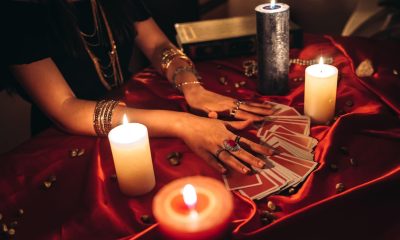
 Astrology3 years ago
Astrology3 years agoWhat personality would suit each major arcana tarot card?
-

 Astrology2 years ago
Astrology2 years agoArchetypal Lovers: Exploring the Timeless Romantic Pairings
-
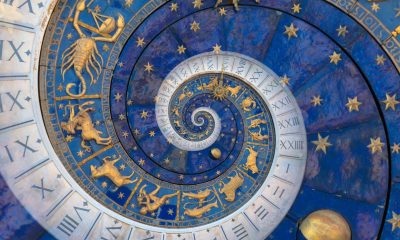
 Astrology3 years ago
Astrology3 years agoRecognizing Vesta in Astrology
-

 Astrology3 years ago
Astrology3 years agoThe Role of Astrology in Self Discovery: How it can help you understand yourself better
-
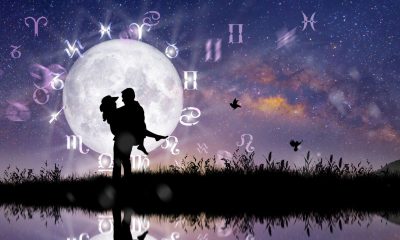
 Astrology3 years ago
Astrology3 years agoAre there any astrological relationship patterns?
-

 Astrology3 years ago
Astrology3 years agoThe connection between astrology and feng shui

